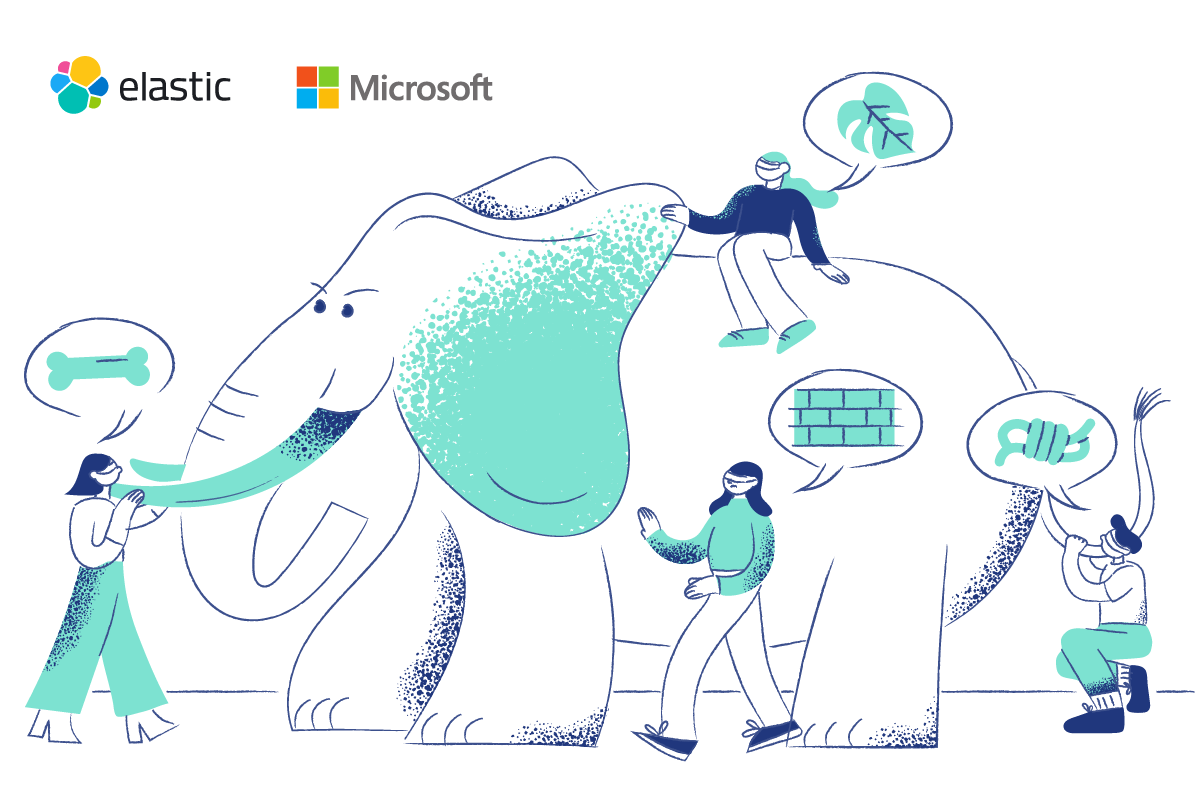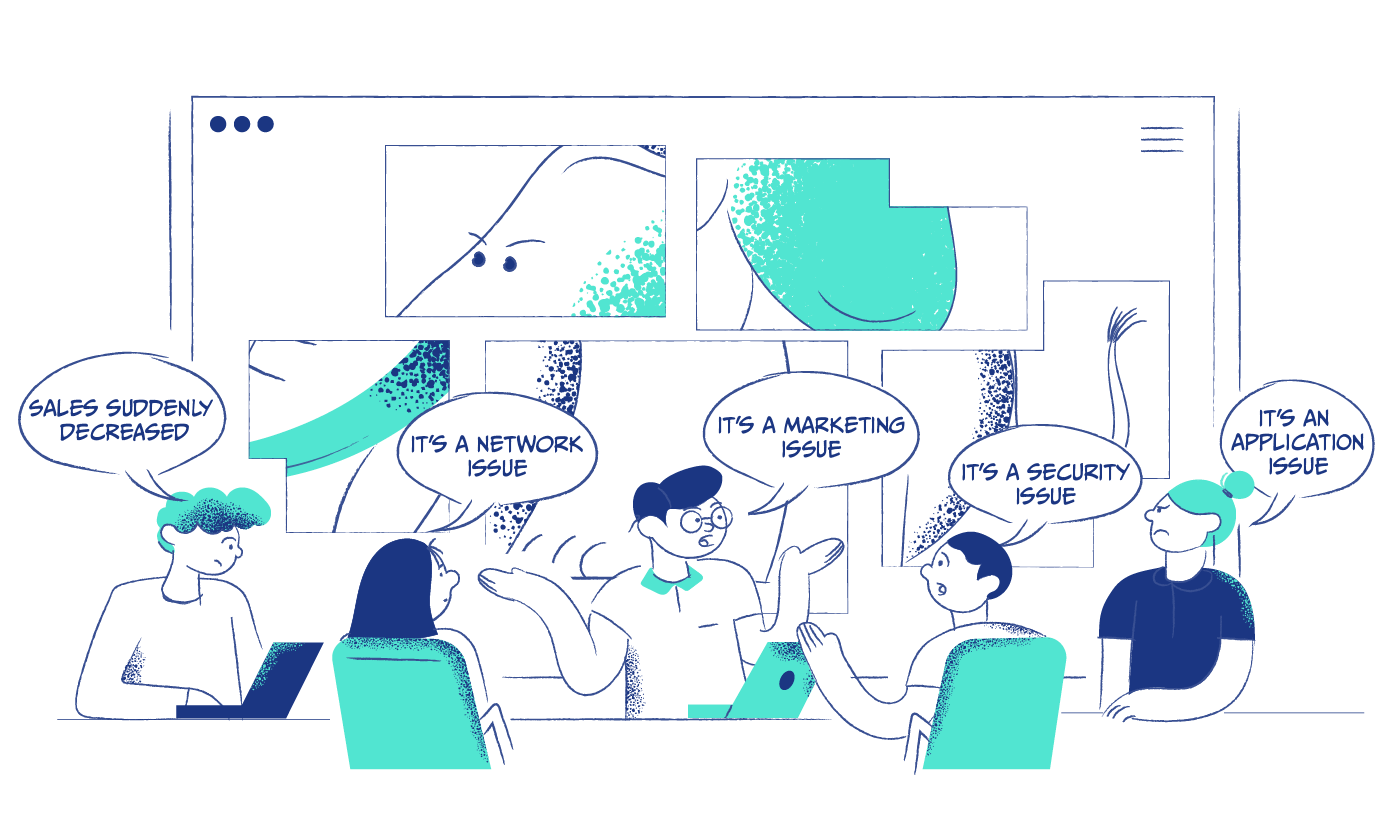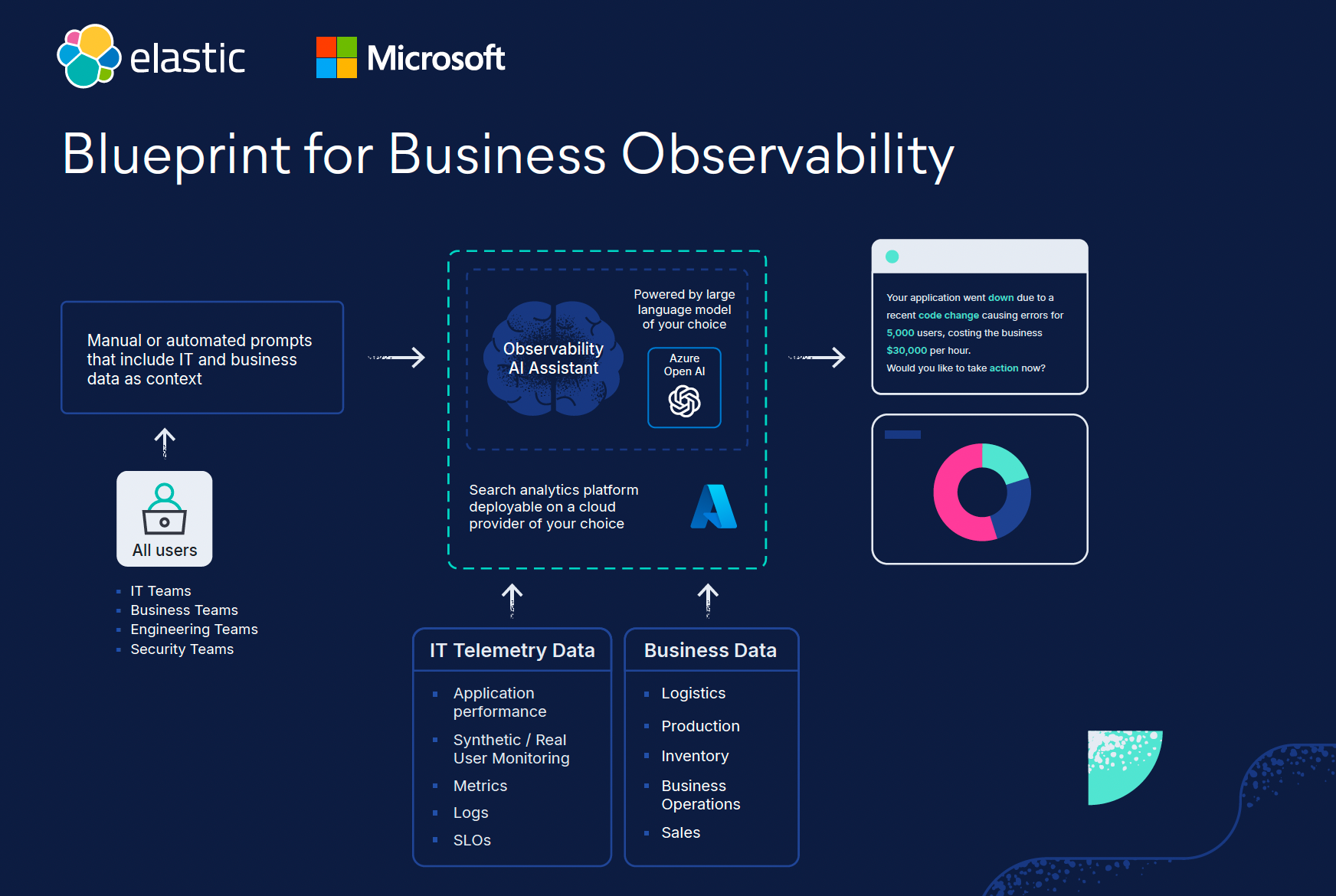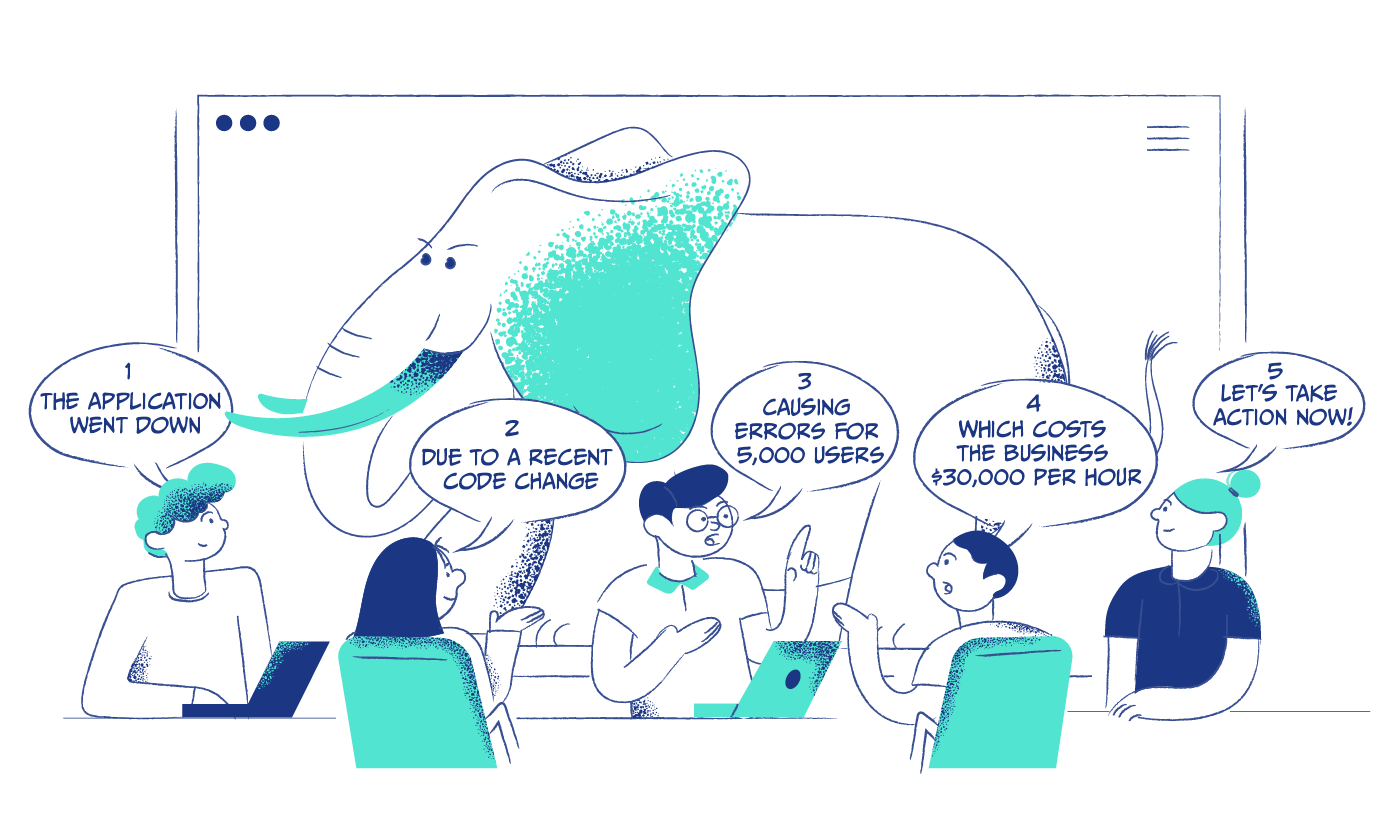Bridging IT intelligence and business KPIs with AI: The elephant in the room

The wisdom of the elephant parable
At the intersection of information technology and business leadership, the ancient parable of the blindfolded individuals and the elephant offers an insightful analogy. Originating from the Indian subcontinent, this story tells of six blindfolded individuals who encounter an elephant for the first time. Each individual touches a different part of the elephant — its side, tusk, trunk, knee, ear, and tail — and subsequently forms a distinct and limited understanding of what the elephant might be. The individual who feels the side believes the elephant to be a wall, the one who touches the tusk thinks it's a spear, and so forth. Subsequently, they argue fiercely, each convinced that their perception of the elephant is the whole truth.

This parable is a powerful metaphor for understanding how different perspectives can lead to divergent and incomplete interpretations of a complex situation. For CIOs and IT executives, this narrative underscores the importance of comprehensive and integrated perspectives in decision-making, especially in the multifaceted and often siloed worlds of technology and business operations.

The parable's relevance to modern-day enterprises
In the dynamic world of modern business, this parable is more relevant than ever. Consider your enterprise as the elephant, and the various functional teams — IT, software engineering, security, and business units — as the blindfolded individuals. Each department is focused on its specific role and develops a limited understanding of the organization's complex environment.
IT teams may prioritize operational resilience only by looking at logs and infrastructure metrics for root cause analysis (RCA). Software engineering could be more focused on innovation and development looking at application traces (APM) and profiling. Security teams are often preoccupied with threat landscapes, looking at security events and alerts, whereas business units focus on market performance and customer engagement KPIs.
This compartmentalization, while useful for specialized tasks, often leads to a fragmented view of the organization’s challenges and opportunities, much like the blindfolded individuals’ fragmented understanding of the elephant.
For CIOs and IT executives across industries, the elephant parable serves as a reminder of the need for a comprehensive view. By understanding and integrating the various parts of the business “elephant,” leaders can develop more effective strategies that align with overall business objectives and accelerate business outcomes.

Business observability as the answer
Business observability emerges as the key to unlocking a unified understanding of the enterprise, similar to bringing together the perspectives of all the blindfolded individuals to understand the whole elephant. Business observability is the comprehensive monitoring and analysis of all business processes and data, enabling businesses to gain real-time insights and proactively manage the performance and health of the organization.
This approach, transcending traditional monitoring, offers a comprehensive view of an organization's operations, encompassing IT, software engineering, security, and various business functions. It's not merely about tool consolidation; it's about integrating data, using advanced AI technologies and enabling actionable insights.
-
Data integration and analysis: Tool consolidation, a growing trend among organizations, is an important step toward a unified approach. Bringing your tools and your data together enables your teams to speak the same language and be on the same page when incidents occur. While this is important, bringing your tools and data together is not enough. You need comprehensive data from every facet of the organization, ideally structured in a common schema to facilitate faster querying and data access. This data should be stored and managed through a robust distributed storage data platform that enables real-time data access, offering a singular view of the enterprise's health and operations regardless of where the data is physically located.
-
Powerful AI insights: Incorporating an AI engine, like a large language model (LLM), is crucial for analyzing this vast amount of data. Such AI tools can detect patterns, predict trends, and offer insights that might be beyond human analysis, leading to more informed decision-making. AI is the catalyst to help correlate the business metrics with the IT data because the volume of data is too great for IT teams to handle on their own and they may not have the domain expertise needed to understand the important business KPIs. Similarly, the business teams don’t have the expertise to understand the IT data.
-
Real-time actionability: The power of business observability lies not just in data collection and analysis but also in the capability to act on these insights in real time. This requires integrating business observability with actionable platforms where insights lead to direct and immediate responses. In IT operations terms, this translates to effective detection, root cause analysis, and remediation. And in security terms, it means, detection, investigation, and response. The actions and the outcomes are what truly matter.
Business observability has impacts across all domains in an organization:
-
IT: In IT, business observability can streamline operations, predict system failures, and optimize resource allocation.
-
Software engineering: For software engineers, it can highlight development bottlenecks, improve code quality, and enhance deployment strategies.
-
Security: Security teams can measure and quantify the business impacts of threats and understand what are the most critical areas of the business to prioritize.
-
Business: Business units can utilize these insights for market analysis, customer behavior understanding, and strategic planning.
Some examples of business observability in practice in different industries include:
-
Financial services: Observing how security incidents impact operations
-
Telecommunications: Monitoring the impact of equipment malfunctions
-
Public sector: Linking website traffic and digital service usage data with IT infrastructure performance, providing insights into how system availability and cybersecurity measures directly impact citizen engagement and satisfaction KPIs
-
Manufacturing: Determining which new product features are worth investing in
-
Retail and ecommerce: Understanding how IT performance impacts customer experience and sales
-
Logistics and transportation: Correlating GPS and vehicle sensor data with IT system performance, enabling the company to align route efficiency and fleet maintenance with overarching business KPIs like on-time delivery rates and fuel cost savings
- Healthcare: Integrating patient care analytics with IT system uptime data, allowing the correlation of electronic health record accessibility and system reliability with patient satisfaction scores and treatment efficiency metrics

Enhancing business outcomes with business observability
Business observability extends its benefits far beyond mere operational efficiency; it is instrumental in elevating the overall business outcomes in three critical areas:
Elevating customer experiences: By having a holistic view of operations, customer interactions, and market trends, organizations can anticipate and cater to customer needs more effectively. This proactive approach can lead to enhanced customer satisfaction, loyalty, and ultimately, greater customer lifetime value.
Improving operational resilience: With comprehensive visibility, enterprises can adapt more swiftly to market changes, predict potential system downtimes, and manage resources more efficiently. This agility and foresight fosters a resilient operational framework that can withstand and adapt to various business disruptions.
Mitigating security risks: In an era where cyber threats are increasingly sophisticated, an integrated framework enables businesses to detect and respond to security threats in real time. This proactive stance is crucial in safeguarding sensitive data and maintaining trust with stakeholders.
How mature is your observability strategy? Find out in our observability maturity assessment.
Take the blindfolds off: Call to action for IT leaders
For CIOs and IT executives, understanding and implementing business observability is no longer a luxury but a necessity in the complex and ever-evolving business landscape, akin to the ancient parable of the elephant and the blindfolded individuals. This approach is essential for a holistic view of the enterprise, integrating data from diverse domains and harnessing AI for deep insights and real-time action.
By adopting business observability, organizations can streamline internal operations, enhance customer experiences, bolster operational resilience, and effectively manage security risks. The challenge for IT leaders is not just to see the business “elephant” but to understand and effectively respond to it, utilizing unified data access and AI-driven insights. This alignment of IT performance with overall business success is not just beneficial across all industries; it's essential for guiding the elephant in the room through the challenging terrain of modern business.
Get a custom assessment tailored to your specific needs. Request your custom assessment.
Learn about the pieces needed to achieve business observability by downloading our business observability blueprint. Download the blueprint.
Accelerate business outcomes by exploring Elastic solutions on the Microsoft Azure Marketplace. Explore Elastic on Azure.
The release and timing of any features or functionality described in this post remain at Elastic's sole discretion. Any features or functionality not currently available may not be delivered on time or at all.
In this blog post, we may have used or referred to third party generative AI tools, which are owned and operated by their respective owners. Elastic does not have any control over the third party tools and we have no responsibility or liability for their content, operation or use, nor for any loss or damage that may arise from your use of such tools. Please exercise caution when using AI tools with personal, sensitive or confidential information. Any data you submit may be used for AI training or other purposes. There is no guarantee that information you provide will be kept secure or confidential. You should familiarize yourself with the privacy practices and terms of use of any generative AI tools prior to use.
Elastic, Elasticsearch, ESRE, Elasticsearch Relevance Engine and associated marks are trademarks, logos or registered trademarks of Elasticsearch N.V. in the United States and other countries. All other company and product names are trademarks, logos or registered trademarks of their respective owners.
